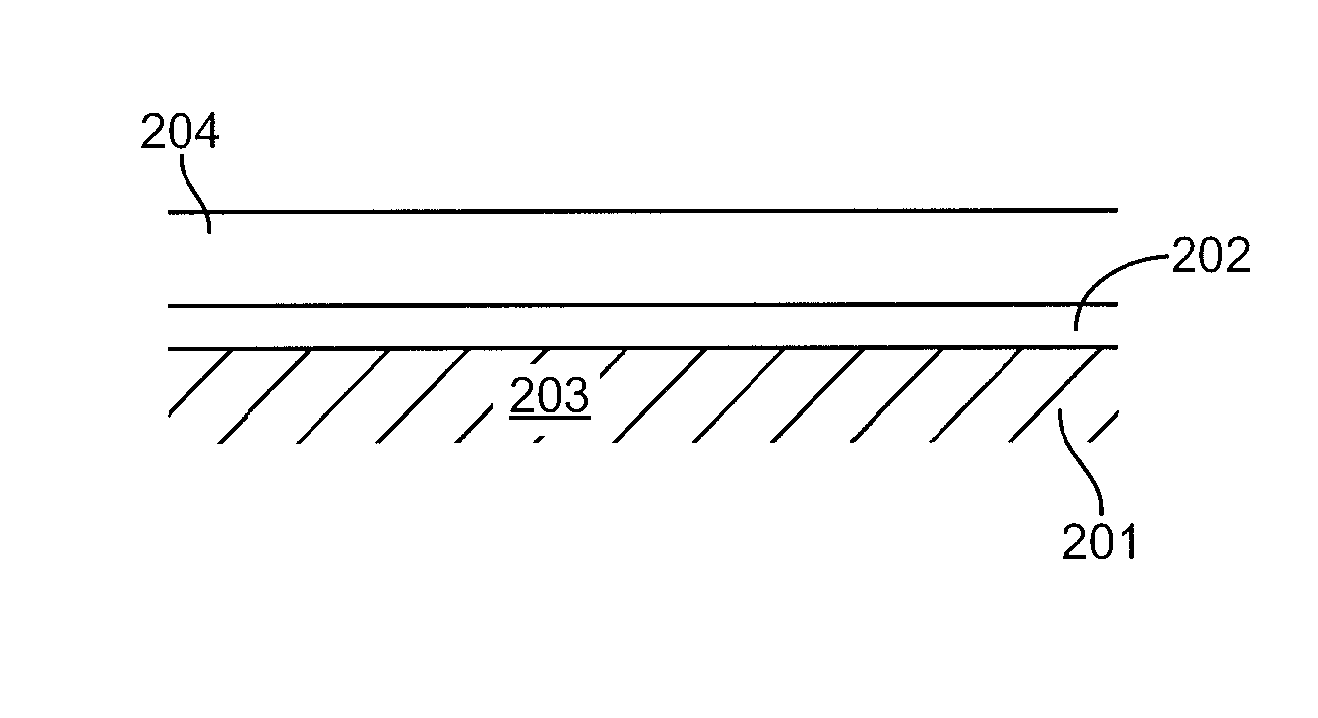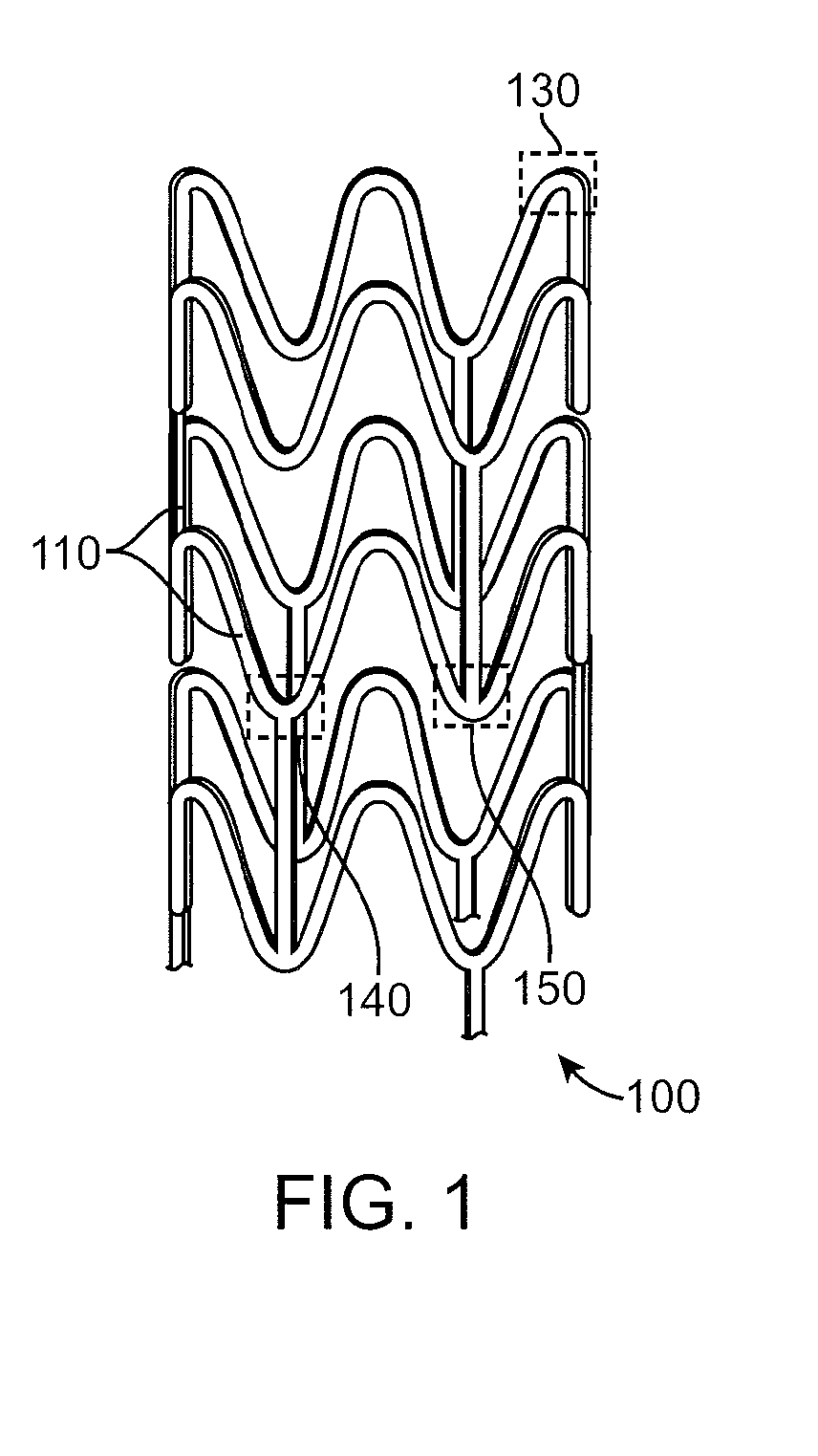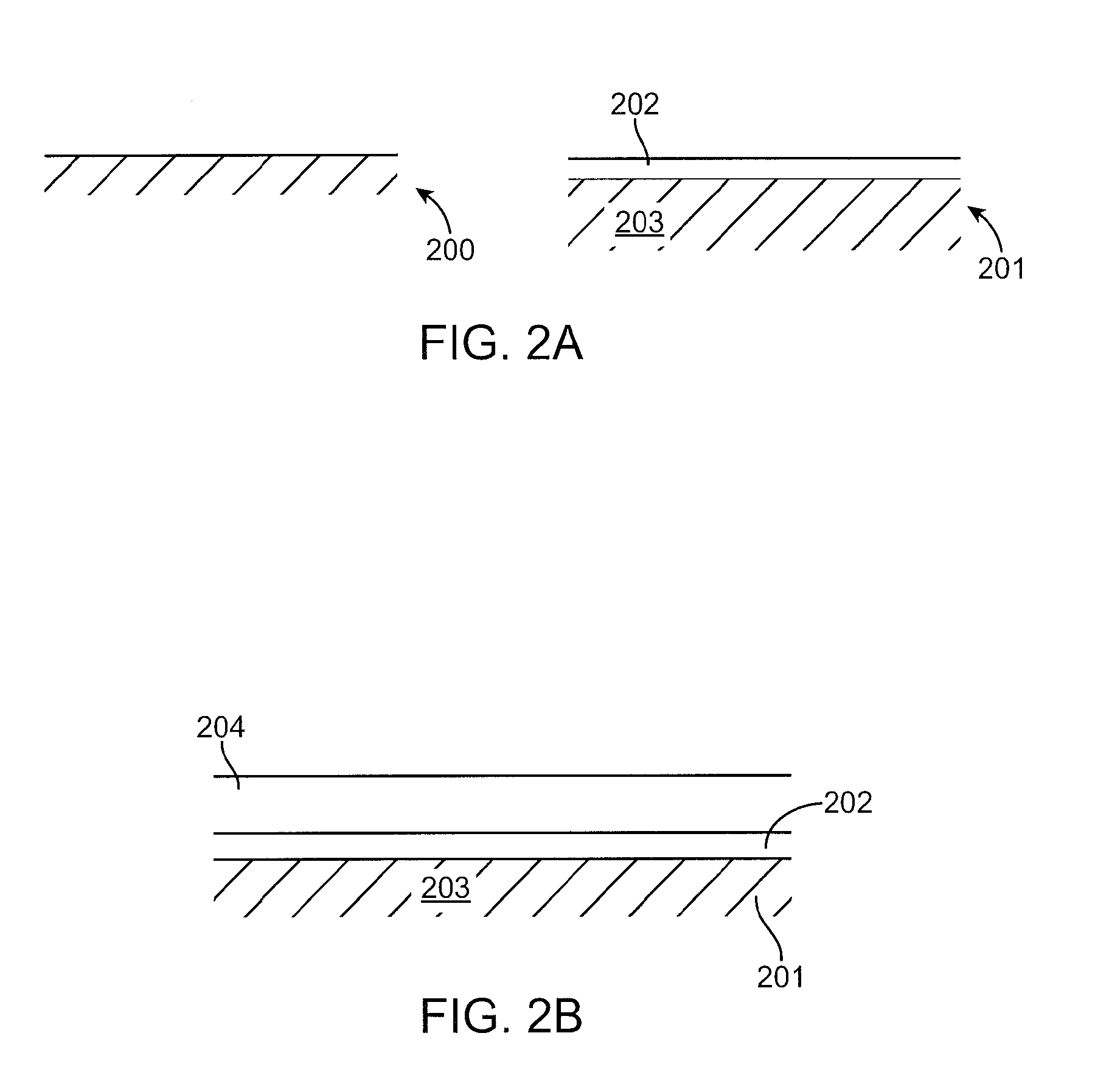Methods to improve adhesion of polymer coatings over stents
- Summary
- Abstract
- Description
- Claims
- Application Information
AI Technical Summary
Benefits of technology
Problems solved by technology
Method used
Image
Examples
example 1
Plasma Treatments
[0148]Poly(L-lactide) stents, 12 mm long from Bioabsorbable Vascular Solutions (BVS) are placed onto stainless steel wire mandrels. These mandrels are placed into a Teflon fixture which holds the wires horizontally. This fixture with multiple stents is placed into a March Plasma C-Series Plasma Treater (St. Petersburg, Fla.). Using oxygen as the working gas, the stents are exposed to plasma conditions of 200 watts, approximately 1 liter / minute oxygen flow rate at a pressure of 100 milli-torr for 150 seconds. After removal from the plasma chamber, the stents may be coated with a drug reservoir layer within 12 hours.
examples 2 , 3
Examples 2, 3
Mechanical Roughening
Example 2
[0149]A 12 mm long poly(L-lactide) in-house stent is mounted on a mandrel composed of a central stainless steel wire on which are slid two cones via holes in the cones. The cones point inwards and are of such a diameter to hold the stent at its distal and proximal ends. This mandrel is mounted in an apparatus to rotate the stent. A sand blasting apparatus, using compressed nitrogen gas is used to direct sodium chloride particles at the stent while the stent rotates. The sandblasting nozzle translates along the length of the stent. After surface roughening, the stent is gently sonicated in deionized water to remove any adhered or embedded sodium chloride, followed by drying in a vacuum oven or a desiccator.
example 3
[0150]In another example, a 12 mm polylactide in-house is placed in a 20 ml glass vial. The vial is half filled with tungsten powder with an average size of 2 microns (Specialty Chemical Group LLC, Akron Ohio). The vial is rotated end over end at a speed of 30 rpm for 10 minutes.
PUM
| Property | Measurement | Unit |
|---|---|---|
| Adhesion strength | aaaaa | aaaaa |
| Ratio | aaaaa | aaaaa |
| Abrasive | aaaaa | aaaaa |
Abstract
Description
Claims
Application Information
 Login to View More
Login to View More - R&D
- Intellectual Property
- Life Sciences
- Materials
- Tech Scout
- Unparalleled Data Quality
- Higher Quality Content
- 60% Fewer Hallucinations
Browse by: Latest US Patents, China's latest patents, Technical Efficacy Thesaurus, Application Domain, Technology Topic, Popular Technical Reports.
© 2025 PatSnap. All rights reserved.Legal|Privacy policy|Modern Slavery Act Transparency Statement|Sitemap|About US| Contact US: help@patsnap.com



